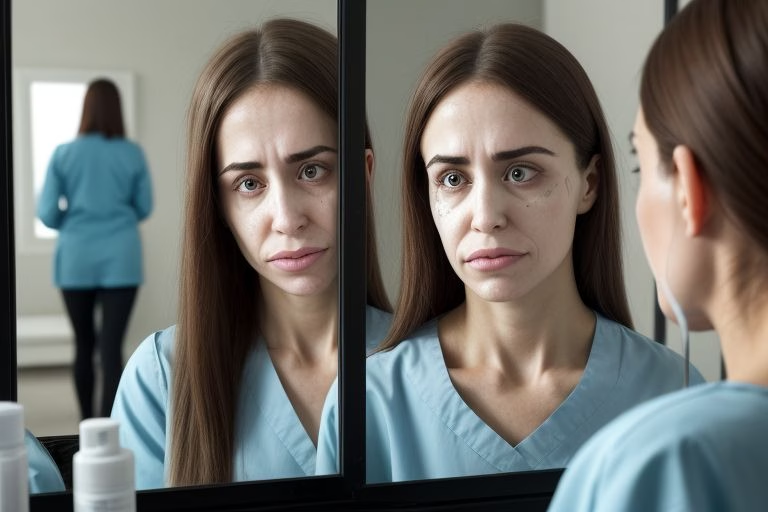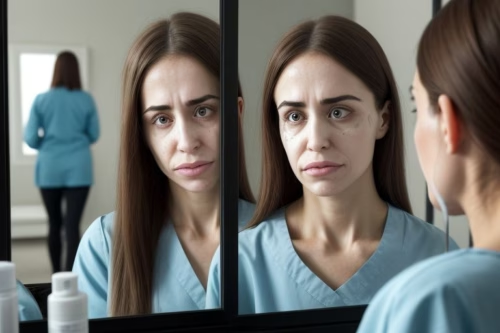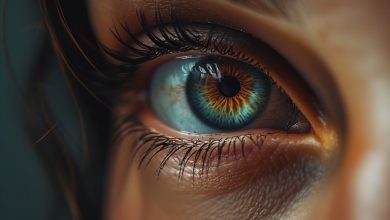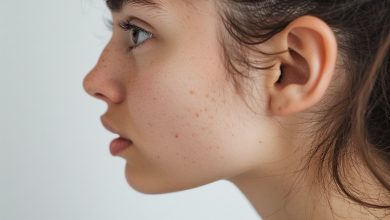
When it comes to body dysmorphic disorder, many people feel overwhelmed by misinformation and stigma. In this comprehensive article, we uncover 10 shocking truths about body dysmorphic disorder that will not only educate you but also empower you to take control of your mental health journey. Whether you are personally affected or want to support someone who is, read on to discover a transformative guide filled with insights, actionable advice, and inspiring hope.
Understanding Body Dysmorphic Disorder
Body dysmorphic disorder is a mental health condition characterized by an obsessive focus on perceived flaws in appearance—flaws that are often not noticeable to others. People suffering from body dysmorphic disorder may spend hours fixating on their looks, comparing themselves to unrealistic standards, and even avoiding social situations due to overwhelming anxiety. This condition is more than just vanity; it is a severe disorder that can negatively impact every aspect of daily life.

The origins of body dysmorphic disorder are complex, involving a mix of genetic, environmental, and psychological factors. Research shows that trauma, societal pressures, and even neurobiological imbalances can contribute to the development of body dysmorphic disorder. For more detailed insights on the science behind this condition, visit reputable sources like the National Institute of Mental Health and the Mayo Clinic.
1. The Hidden Prevalence of Body Dysmorphic Disorder
One shocking truth about body dysmorphic disorder is that it is more common than many think. Studies estimate that approximately 2.4% of the population suffers from body dysmorphic disorder, yet many cases go undiagnosed. The hidden prevalence of body dysmorphic disorder means that millions of individuals are struggling in silence. Early recognition and intervention can dramatically improve outcomes.
This statistic emphasizes the need for increased awareness and better screening processes in schools, workplaces, and healthcare settings. Educators, employers, and health professionals are urged to be vigilant, as early signs of body dysmorphic disorder can easily be mistaken for low self-esteem or general anxiety.
2. Body Dysmorphic Disorder Is Not Just About Appearance
A common misconception is that body dysmorphic disorder is solely about vanity or superficial concerns. In reality, body dysmorphic disorder is a debilitating mental health condition that affects one’s emotional well-being, social interactions, and overall quality of life. Many individuals with body dysmorphic disorder suffer from severe depression, anxiety, and even suicidal ideation.
It is essential to recognize that the distress caused by body dysmorphic disorder is genuine. The intense preoccupation with perceived defects can result in a vicious cycle of negative thinking and self-harm. Recognizing this truth is the first step towards breaking the cycle and seeking professional help.
3. The Role of Genetics and Environment in Body Dysmorphic Disorder
Recent studies suggest that both genetics and environmental factors play a significant role in the onset of body dysmorphic disorder. Individuals with a family history of mental health disorders may have a predisposition to developing body dysmorphic disorder. Moreover, societal influences, such as unrealistic media portrayals of beauty, can exacerbate the condition.
Understanding the dual influence of nature and nurture in body dysmorphic disorder can help reduce the stigma. It becomes clear that this is not a choice or a sign of weakness but a complex interplay of factors that requires empathy and proper treatment. For further reading on genetic influences and environmental triggers, check out articles from Psychology Today.
4. The Devastating Impact on Daily Life
The impact of body dysmorphic disorder on daily life is profound. Simple activities like going out with friends, attending work, or even looking in the mirror can become a source of intense anxiety and distress. Those affected often resort to extreme measures such as repetitive grooming, seeking constant reassurance, or even considering cosmetic procedures that may not address the underlying issues.
This constant battle can lead to isolation, decreased productivity, and a significant decline in mental health. Understanding the daily challenges faced by individuals with body dysmorphic disorder is crucial for creating supportive environments in both personal and professional settings.
5. Body Dysmorphic Disorder and Its Connection to Other Mental Health Issues
It is not uncommon for body dysmorphic disorder to coexist with other mental health conditions such as depression, anxiety disorders, and obsessive-compulsive disorder (OCD). This overlap can complicate diagnosis and treatment, making it essential for healthcare providers to adopt a comprehensive approach when assessing patients.
The interconnected nature of body dysmorphic disorder and other conditions means that a multi-faceted treatment plan is often required. This may include cognitive behavioral therapy (CBT), medication, and support groups. To learn more about these connections, the American Psychiatric Association offers detailed guidelines and research findings.
6. Innovative Treatments: Beyond Traditional Therapy
Traditional treatments for body dysmorphic disorder have included medication and psychotherapy, but emerging therapies are beginning to offer new hope. Body dysmorphic disorder can be effectively managed with a combination of cognitive behavioral therapy (CBT), mindfulness practices, and even novel approaches like virtual reality therapy.
These innovative treatments are designed to help patients confront and manage their negative thoughts in a controlled, therapeutic environment. For instance, VR therapy can simulate social interactions and scenarios that trigger anxiety, allowing individuals to practice coping strategies safely. The future of treating body dysmorphic disorder is bright as research continues to evolve in this field.
7. Real-Life Stories: Triumph Over Body Dysmorphic Disorder
One of the most inspiring truths about body dysmorphic disorder is that recovery is possible. Countless individuals have overcome the challenges of body dysmorphic disorder and now lead fulfilling lives. Their journeys highlight the resilience of the human spirit and the power of proper treatment and support.
These personal stories serve as a beacon of hope for anyone struggling with body dysmorphic disorder. Whether it’s through therapy, medication, or the support of loved ones, recovery is achievable. Reading firsthand accounts on platforms like NAMI can provide valuable insights and encouragement for those on their path to healing.
8. Practical Coping Strategies for Managing Body Dysmorphic Disorder
Living with body dysmorphic disorder requires a toolkit of coping strategies to manage the daily challenges. Here are some practical tips:
- Mindfulness and Meditation: Practicing mindfulness can help break the cycle of obsessive thoughts. Techniques such as deep breathing and meditation are effective in reducing stress.
- Healthy Lifestyle: Regular exercise, a balanced diet, and sufficient sleep can improve overall well-being and reduce the symptoms of body dysmorphic disorder.
- Support Groups: Engaging with others who understand the struggle can provide comfort and practical advice. Online communities and local support groups are invaluable resources.
- Professional Guidance: Consistent therapy sessions, whether through CBT or other forms of psychotherapy, can help individuals develop strategies to manage their condition effectively.
For more detailed guidance on coping mechanisms, consider resources from the Anxiety and Depression Association of America.
9. How to Support a Loved One Suffering from Body Dysmorphic Disorder
Supporting someone with body dysmorphic disorder can be challenging, but your empathy and understanding can make a significant difference. Here are some ways to help:
- Listen Without Judgment: Create a safe space where your loved one can express their feelings without fear of criticism.
- Encourage Professional Help: Gently suggest seeking professional help and offer to assist in finding the right therapist.
- Educate Yourself: Learning about body dysmorphic disorder will help you understand their struggles and provide better support.
- Be Patient: Recovery from body dysmorphic disorder is a long journey. Your continuous support and patience can be a pillar of strength for someone in need.
Detailed advice on supporting mental health can be found on websites like Mental Health America.
10. The Importance of Raising Awareness and Advocacy
Raising awareness about body dysmorphic disorder is critical for reducing stigma and encouraging early intervention. Advocacy efforts, including public education campaigns and community support initiatives, are essential in creating a more inclusive and understanding society.
By sharing accurate information and personal stories, we can dispel myths and foster a greater understanding of body dysmorphic disorder. Advocacy not only benefits those directly affected but also contributes to the broader mental health dialogue, encouraging policy changes and improved healthcare practices.
Debunking Myths About Body Dysmorphic Disorder
Many myths surround body dysmorphic disorder, leading to further isolation and misunderstanding. Let’s debunk a few common misconceptions:
- Myth 1: Body dysmorphic disorder is just about vanity.
Truth: It is a serious mental health condition that affects overall quality of life. - Myth 2: Only women suffer from body dysmorphic disorder.
Truth: Body dysmorphic disorder affects individuals of all genders. - Myth 3: Cosmetic surgery can cure body dysmorphic disorder.
Truth: While surgery might address physical concerns temporarily, it does not resolve the underlying psychological issues.
By debunking these myths, we can help create a more supportive environment for those suffering from body dysmorphic disorder.
Navigating Treatment Options: What Works Best?
Choosing the right treatment for body dysmorphic disorder often involves a combination of therapies. Here are some common treatment options:
- Cognitive Behavioral Therapy (CBT): CBT is considered the gold standard in treating body dysmorphic disorder. It helps patients challenge and change their negative thought patterns.
- Medications: Antidepressants, particularly selective serotonin reuptake inhibitors (SSRIs), have been shown to reduce symptoms of body dysmorphic disorder.
- Group Therapy: Sharing experiences in a group setting can help individuals realize they are not alone, fostering a sense of community.
- Emerging Therapies: Innovative approaches like virtual reality therapy are gaining traction, providing patients with new ways to confront their fears.
For further information on treatment modalities, reputable sources such as the National Alliance on Mental Illness (NAMI) offer in-depth discussions on therapy options and patient testimonials.
The Role of Technology in Managing Body Dysmorphic Disorder
In today’s digital age, technology is playing a growing role in the management of body dysmorphic disorder. Mobile apps and online therapy platforms make mental health resources more accessible than ever. These tools provide daily reminders, mood tracking, and even guided meditation exercises to help individuals manage their symptoms on the go.
Teletherapy, for example, has become an invaluable resource for those who might otherwise face barriers to accessing treatment. By leveraging technology, mental health professionals can reach a broader audience, ensuring that those suffering from body dysmorphic disorder receive the help they need, no matter where they are located.
Empowering Yourself and Others: Building a Resilient Future
Empowerment is key when dealing with body dysmorphic disorder. Educating yourself, seeking help, and building a supportive community can significantly enhance the recovery process. Here are some empowerment strategies:
- Self-Education: Knowledge is power. The more you learn about body dysmorphic disorder, the better equipped you will be to manage it.
- Advocacy: Participate in local and online advocacy efforts to spread awareness and reduce stigma.
- Mindset Shifts: Cultivate a mindset focused on growth and resilience rather than perfection.
- Celebrate Small Victories: Recognize and celebrate progress, no matter how minor it may seem. Every step forward is a win.
These strategies not only help individuals suffering from body dysmorphic disorder but also inspire communities to support mental health initiatives more broadly.
The Future of Body Dysmorphic Disorder Research
The future looks promising for the field of body dysmorphic disorder research. Ongoing studies are exploring new treatment methods, the role of genetics, and the impact of early intervention on long-term outcomes. Researchers are increasingly focusing on personalized treatment plans that address the unique needs of each patient.
Innovations in neuroscience and technology hold the potential to transform how we diagnose and treat body dysmorphic disorder. With continued investment in research, the hope is that more effective therapies will emerge, leading to improved quality of life for those affected.
Frequently Asked Questions about Body Dysmorphic Disorder
Q: What exactly is body dysmorphic disorder?
A: Body dysmorphic disorder is a mental health condition where an individual obsesses over perceived flaws in their appearance. These flaws are often minor or even non-existent to others.
Q: How can I tell if someone might have body dysmorphic disorder?
A: Look for signs such as excessive mirror checking, constant comparison with others, avoidance of social situations, and a significant impact on daily functioning.
Q: What are the treatment options available for body dysmorphic disorder?
A: Common treatments include cognitive behavioral therapy (CBT), medications like SSRIs, group therapy, and innovative methods such as virtual reality therapy. It is important to consult a mental health professional for personalized care.
Q: Is body dysmorphic disorder a lifelong condition?
A: With proper treatment and ongoing support, many individuals learn to manage body dysmorphic disorder effectively, though it can be a chronic condition for some.
For more FAQs and detailed answers, the Mayo Clinic offers an excellent resource on mental health disorders.
Final Thoughts: A Roadmap to Recovery
Overcoming body dysmorphic disorder is a journey that involves courage, self-compassion, and the willingness to seek help. The shocking truths outlined in this article emphasize that while body dysmorphic disorder can have a devastating impact, there is hope and a path to recovery. Whether you are looking for treatment options, ways to support a loved one, or simply trying to understand this condition better, remember that you are not alone.
By staying informed and connected with reliable mental health resources, you can take meaningful steps towards recovery. Explore trusted resources like the National Institute of Mental Health and Mental Health America to deepen your understanding and find the support you need.
A Call to Action
If you or someone you know is struggling with body dysmorphic disorder, please consider reaching out for professional help. Mental health professionals, support groups, and online communities are available to offer guidance, empathy, and the tools necessary to reclaim a life filled with self-acceptance and joy.
Share this article with friends, family, or anyone who might benefit from knowing the truth about body dysmorphic disorder. Spreading awareness is the first step in dismantling the stigma and helping those in need feel seen and supported.
Embracing a Brighter Future
The journey with body dysmorphic disorder might be challenging, but each day is an opportunity for growth and renewal. Through persistent effort, informed choices, and the support of caring communities, individuals can overcome the shadows of body dysmorphic disorder. Let this article be a testament to the resilience of the human spirit and a reminder that every person has the power to transform their life.
Whether through therapy, self-help, or community support, the path to recovery is paved with small, courageous steps. Remember, every effort counts, and every success—no matter how small—brings you closer to a life free from the constraints of body dysmorphic disorder.
Resources and Further Reading
For those seeking additional information and support, here are some recommended resources:
- National Institute of Mental Health – Comprehensive insights into mental health research and treatment.
- Mayo Clinic – Body Dysmorphic Disorder – Detailed medical overview and treatment options.
- Anxiety and Depression Association of America – Practical advice on managing anxiety, depression, and related disorders.
- Mental Health America – Resources and support networks for mental health challenges.
By engaging with these trusted sources, you can expand your understanding of body dysmorphic disorder and gain access to the latest research, treatment options, and personal support networks.
In Conclusion
Body dysmorphic disorder is a multifaceted condition that demands both awareness and action. This article has explored 10 shocking truths that shed light on the real challenges, innovative treatments, and hopeful outlook for those affected by body dysmorphic disorder. By arming yourself with knowledge and surrounding yourself with supportive resources, you can help change the narrative around this condition.
Remember, the journey to overcoming body dysmorphic disorder is unique for every individual, but with determination, professional guidance, and the right support network, transformation is not just possible—it’s within reach. Embrace the power of knowledge, connect with trusted mental health professionals, and take the first step towards a healthier, more empowered future today.
In sharing these insights, our hope is to inspire change, encourage open dialogue, and promote a deeper understanding of body dysmorphic disorder. Whether you are seeking help for yourself or supporting someone else, remember that every step towards awareness is a step towards healing. Together, we can dismantle stigma and pave the way for a brighter, more accepting tomorrow.



